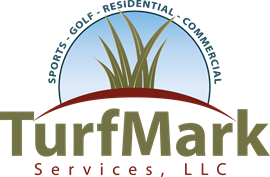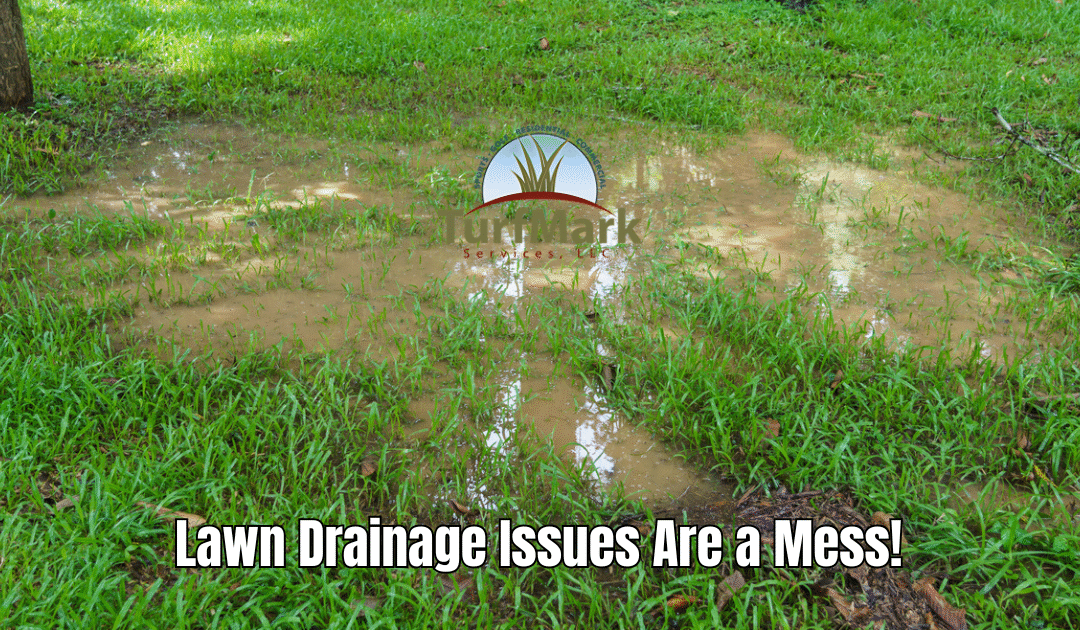At Lake of the Ozarks, a lawn is more than just grass—it’s part of your view, your home’s value, and your lifestyle. Whether you’re managing a steep lot, a sprawling lawn, or a high-traffic sports field, drainage can make or break your turf. And we’re not talking about a little puddle after a storm. Poor drainage creates long-term headaches that quietly kill your grass, erode your soil, and turn your lakefront paradise into a muddy mess.
Let’s walk through how drainage issues sneak up on even the best-looking lawns, what causes them, and most importantly—what you can do about it.
Why Drainage Matters More Around the Lake
Here at Lake of the Ozarks, we’ve got a few extra curveballs when it comes to lawn drainage:
-
Steep terrain: Many homes are built on hillsides, which means water runs fast—and not always where you want it.
-
Rocky, compacted soil: Our native soil doesn’t always absorb water well, especially after years of foot traffic or equipment use.
-
Heavy seasonal rains: Missouri weather doesn’t hold back, especially in spring and early summer.
-
Proximity to the shoreline: Homes closer to the lake can experience elevated water tables, making drainage even trickier.
In other words, proper drainage isn’t just “nice to have” around here—it’s essential.
What Healthy Drainage Actually Looks Like
A well-draining lawn should absorb water evenly and quickly, without puddling or runoff. That doesn’t mean the grass never gets wet—of course it does—but it means water isn’t sitting around for days, suffocating the roots or pooling near your foundation.
Here’s what contributes to healthy drainage:
-
Balanced soil: Loamy soil with good structure lets water soak in while still holding nutrients.
-
Proper slope: Ideally, your lawn is graded to gently guide water away from your home and flat areas.
-
Deep, healthy roots: Strong turf roots improve the soil’s ability to take in water without flooding.
When any of these elements are off balance, water stops soaking in and starts becoming a problem.
Common Signs Your Lawn Has a Drainage Problem
You don’t need to be a turf expert to spot early warning signs of poor drainage. These are some of the most common red flags we see around Lake of the Ozarks:
1. Standing Water
If water is still sitting on your lawn 24–48 hours after a rain, it’s not draining properly. This is especially common in flat areas or at the base of hills.
2. Mushy, Spongy Ground
Walking across your lawn shouldn’t feel like stepping on a soaked sponge. Constantly saturated soil breaks down over time and becomes a breeding ground for disease.
3. Yellowing or Dying Grass
Roots need oxygen to survive. When soil stays wet for too long, roots suffocate and die off, causing large yellow or brown patches—especially in low areas.
4. Moss or Algae
Moss thrives in moist, compacted soil with poor drainage and low sunlight. If it’s creeping in, it’s usually a sign of underlying drainage problems.
5. Soil Erosion
If you notice bare patches on hillsides or water carving little paths through your yard, your topsoil is being washed away.
6. Compacted Soil
Hard, dense ground doesn’t absorb water well. If your lawn feels like concrete after a rain, the water likely isn’t soaking in—it’s running off.
What Happens If You Ignore It?
Drainage problems don’t stay small. Left alone, they create long-term damage that’s costly to fix—and in some cases, irreversible.
1. Turf Suffocation
Grass roots need air, and overly wet soil pushes out oxygen. Eventually, this causes root rot and total turf failure.
2. Weed and Disease Pressure
Wet lawns are a perfect storm for fungal infections, mold, and aggressive weeds like nutsedge and crabgrass. These thrive in saturated conditions and outcompete your grass quickly.
3. Soil Erosion
Once topsoil is gone, it’s incredibly difficult (and expensive) to replace. Erosion also affects the structural integrity of any retaining walls, landscaping, or patios on your property.
4. Damage to Foundations and Hardscapes
Water pooling near your home or other structures can lead to cracks, shifting, or even basement flooding—especially in lakefront properties.
Several Approaches That Can Improve Drainage
There’s no one-size-fits-all solution for lawn drainage, especially around the Lake where every property has its quirks. But there are proven methods that can be combined to fit a property’s unique needs. Here are several options turf professionals use:
1. Site Grading
Reshaping the slope of your lawn is one of the most fundamental ways to control how water flows. This can be as simple as reworking a few low spots, or as involved as re-contouring the entire lawn surface to direct water away from problem areas.
2. French Drains
A French drain is a gravel-filled trench with a perforated pipe that redirects water away from wet zones. These are especially useful for areas that stay soggy despite good surface grading.
3. Dry Creek Beds
These are decorative yet functional rock features that channel water during storms, especially on sloped lots. They blend beautifully with lake-area landscaping and help slow erosion.
4. Downspout Extensions & Catch Basins
Rain from your roof can dump hundreds of gallons into your yard. Extending downspouts or installing catch basins ensures all that water moves away from your lawn and foundation.
5. Soil Aeration & Topdressing
If compacted soil is the culprit, mechanical aeration (pulling plugs of soil from the lawn) followed by compost-based topdressing can help water soak in better.
6. Retaining Walls with Drainage
On steeper properties, retaining walls can be built with proper weep holes and gravel backfill to manage runoff while stabilizing the slope.
💡 Pro tip: A good drainage plan often combines several of these solutions for the best long-term results.
The TurfMark Take: Our Approach to Drainage
We’ve worked on a lot of turf in a lot of tough spots—steep lakefronts, sports fields that flood, and lawns that just won’t dry out. While every property is different, we always start with a careful look at the terrain, soil structure, and turf health before suggesting a solution.
We believe in addressing the cause, not just the symptoms. That means we won’t slap in a drain and call it a day. We work with our clients to come up with a practical, long-term plan that fits their property, their goals, and their lifestyle.
How to Spot Drainage Issues Before It’s Too Late
Not every drainage problem is as obvious as a pond in your front yard. Sometimes, it’s the slow damage that does the most harm. That’s why we recommend checking for signs regularly, especially:
-
After heavy rains (walk your property the next day)
-
In shady areas where moss or mildew might take hold
-
Near downspouts, patios, or sloped garden beds
-
At the base of retaining walls or any visible grade transitions
When to Call in a Pro
If your lawn is consistently soggy, eroding, or showing signs of root damage, it’s time for a professional evaluation. A proper drainage plan can save you thousands in turf repairs, landscaping fixes, and home maintenance down the road.
At TurfMark, our team understands the unique terrain around Lake of the Ozarks. We’ve seen the damage poor drainage can cause—and we know what it takes to fix it.
Let’s Talk Drainage Before It Becomes Damage
If something feels off with your lawn—or you’re just not sure what’s going on beneath the surface—we’re here to help. Our team offers free, on-site drainage assessments to identify issues before they become big (and expensive) problems.
Request your free quote today.
We’re ready when you are—and we’re not afraid to walk a steep slope to help you out.

